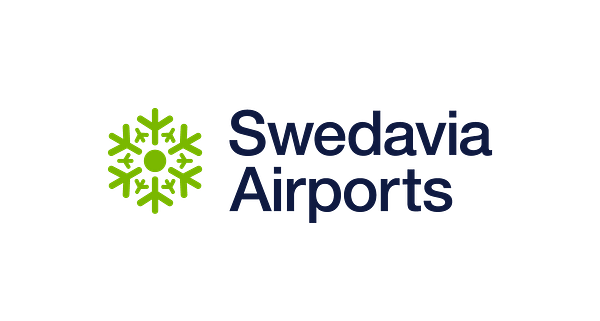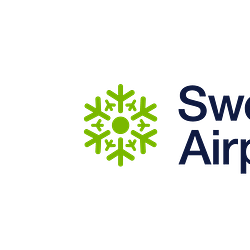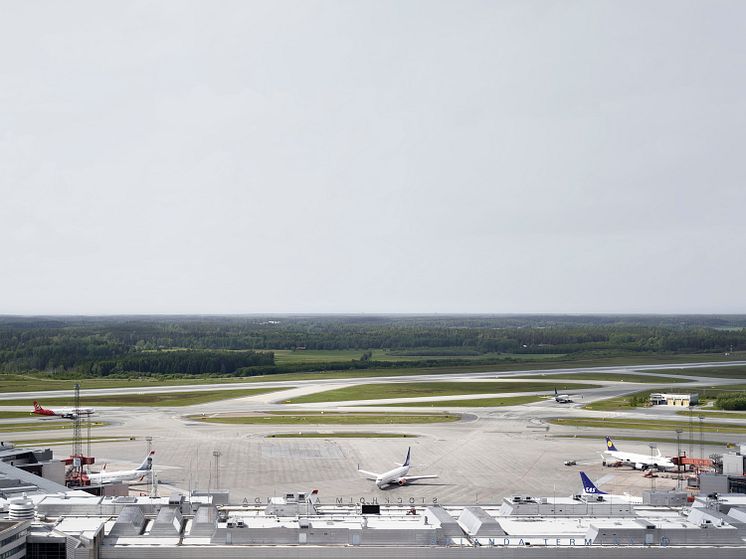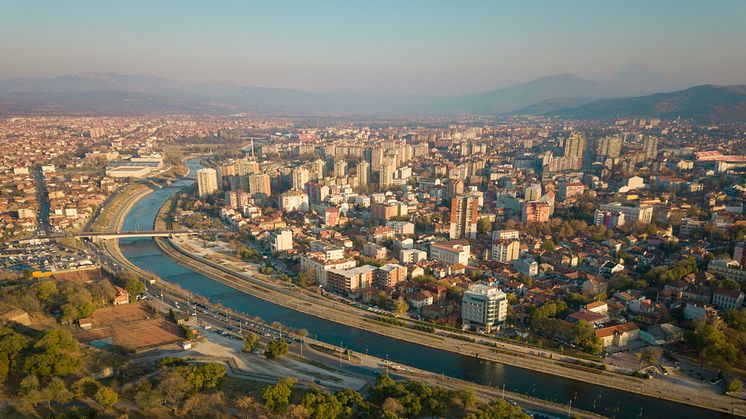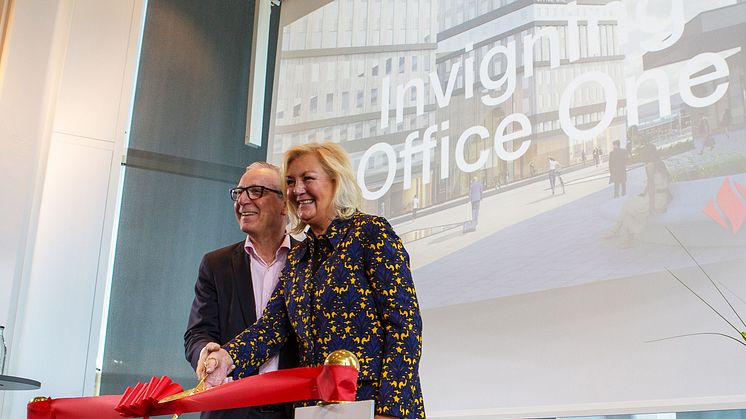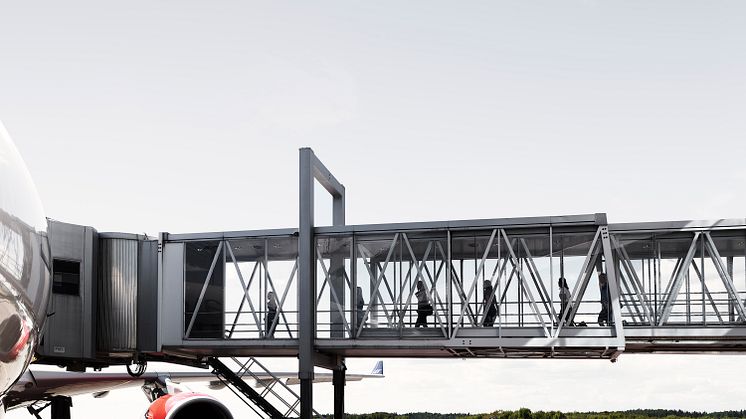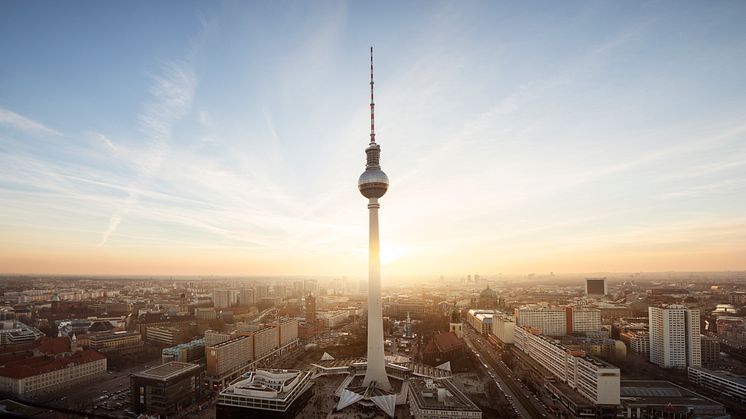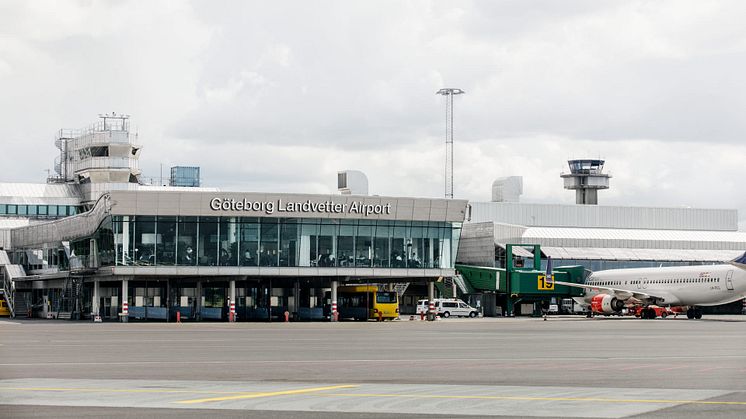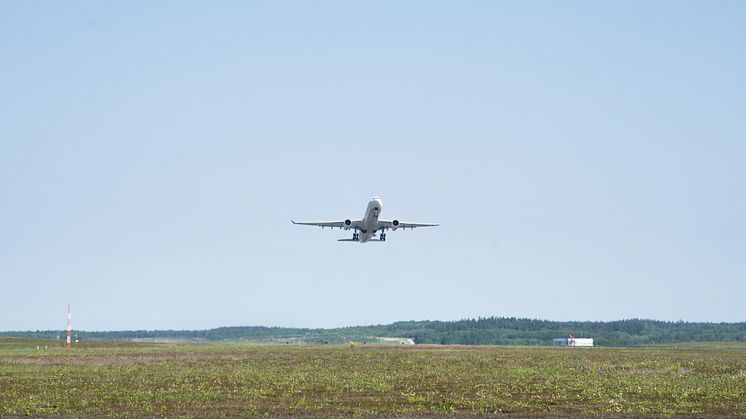
Press release -
Swedavia continues to promote the air transport industry’s transformation to tackle climate change – bio jet fuel to be used at several airports
Beginning June 5 and for the next few days, bio jet fuel will be used to refuel aircraft at several of Swedavia’s airports, including Stockholm Arlanda Airport. These airports are some of the only ones in the world to use this fuel, which sharply reduces emissions of fossil carbon dioxide. This venture is part of Swedavia’s strategy to work for the transformation of the air transport industry to tackle climate change and for fossil-free Swedish air travel by 2045.
Swedavia has worked for a number of years to promote large-scale use of bio jet fuel, which reduces emissions of fossil carbon dioxide by up to 80 per cent compared to traditional jet fuel. Since 2016, Swedavia purchases bio jet fuel each year for the amount used for the company’s air travel for business purposes, equivalent to about 450 tonnes.
“Being able to fly in a way that is environmentally sustainable is an essential requirement for air transport to also be a transport mode of the future that links Sweden together and links Sweden with the rest of the world. Bio jet fuel is one of the tools that will get us there,” says Jonas Abrahamsson, president and CEO of Swedavia.
This year’s delivery of bio jet fuel is made from used cooking oil by the Finnish producer Neste. The fuel is mixed in with traditional jet fuel and will be used for refuelling at Stockholm Arlanda Airport, Malmö Airport, Umeå Airport and Åre Östersund Airport. Later in June, Göteborg Landvetter Airport will also receive a delivery. The bulk of this year’s supply will be delivered to Stockholm Arlanda Airport.
“It is already possible to fly sustainably today thanks to bio jet fuel. But the quantities produced are far too limited and the fuel is too expensive. Investments in large-scale biofuel production and well-functioning policy instruments that can drive the necessary transformation to fossil-free air travel are therefore needed,” notes Jonas Abrahamsson.
Swedavia’s investment in bio jet fuel is part of its strategy to have five per cent of all jet fuel used for refuelling at Swedish airports is fossil-free by 2025. Swedavia also works actively to reduce fossil carbon dioxide emissions from its own operations. All of its airports will have zero emissions from their own operations by 2020.
“Our climate work is founded on two pillars. We have already made great progress in reducing emissions from our own operations. Today our airports are among the most climate-smart in the world. At the same time, it is just as important that we contribute to the transformation of the entire industry, with investment in bio jet fuel being one of the keys,” says Lena Wennberg, sustainability and environmental manager at Swedavia.
Facts about Swedavia’s environmental work and goal
- Swedavia’s own operations at all ten of its airports shall be fossil-free by 2020, which is being achieved through investments in biofuels for and the electrification of ground-based vehicles.
- Five per cent of all fuel used to refuel aircraft at Swedish airports shall be fossil-free by 2025.
- The Fossil-Free Sweden initiative has produced a road map for the Swedish air transport industry. The goal is to have fossil-free Swedish domestic air travel by 2030 and fossil-free international air travel by 2045, in line with international climate goals. This shall be achieved through energy efficiency improvements, renewable jet fuels and electrification.
- Swedavia buys bio jet fuel for the company’s air travel for business purposes, which is equivalent to 450 tonnes of fuel annually.
Facts about the delivery of bio jet fuel
- The bio jet fuel being delivered was made from used cooking oil and produced by Neste in Finland. It was then refined in Belgium and transported by ship to Gävle, where the fuel was mixed and tested. The delivery was then conveyed from Gävle to Stockholm Arlanda by rail and to the other airports by tanker truck.
- The percentage of renewable fossil fuel in the mixture is 36 per cent. The highest percentage of fossil-free jet fuel allowed at present is 50 per cent.
- The total delivery is 450 tonnes, which is equivalent to the carbon dioxide emissions from about 1,500 round-trip flights between Stockholm and New York or 10,000 round-trip flights between Stockholm and Luleå.
- Stockholm Arlanda Airport will be supplied with the bulk of the fuel, about 270 tonnes.
- Åre Östersund Airport will get about 45 tonnes of fuel.
- Umeå Airport will get about 45 tonnes of fuel.
- Malmö Airport will get about 45 tonnes of fuel.
- Göteborg Landvetter Airport will get about 45 tonnes of fuel.
- Swedavia is purchasing the fuel from Air BP, which is a new supplier this year.
For further information, please contact Swedavia’s press office at +46 (0)10-109 01 00 or press@swedavia.se
Categories
Swedavia is a State-owned group that owns, operates and develops ten airports across Sweden. Our role is to create the access Sweden needs to facilitate travel, business and meetings – in Sweden, in Europe and around the world. Safe, satisfied passengers are the foundation of our business. Swedavia is a world leader in developing airports with the least possible environmental impact. The Group has revenue of over 5.7 billion Swedish kronor and some 3,100 employees.
